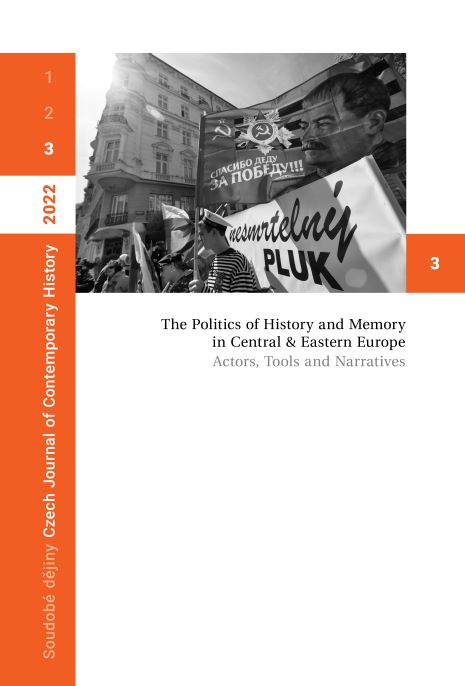Interpreting the Creation of Czechoslovakia between 1918 and 1989
Interpreting the Creation of Czechoslovakia between 1918 and 1989
Shifts and Changes in the Politics of History and Memory
Author(s): Jan Hálek, Jakub ŠtofaníkSubject(s): History, History of ideas, Pre-WW I & WW I (1900 -1919), WW II and following years (1940 - 1949), Post-War period (1950 - 1989), History of Communism, Politics of History/Memory
Published by: AV ČR - Akademie věd České republiky - Ústav pro soudobé dějiny
Keywords: Czechoslovakia;creation of Czechoslovakia;28 October 1918;state holidays;Czechoslovak historiography;communism;politics of memory;historical politics;commemorations
Summary/Abstract: The article focuses on the construction of historical narratives and the construction of memory regarding the emergence of Czechoslovakia (28 October 1918) in the second half of the twentieth century. It analyses Czech and Slovak historiography and the significance of direct and indirect political and ideological influences. It explores shifts in the official narrative from the establishment of the communist regime to its collapse through an analysis of party texts, scholarly publications and conferences. The authors pay equal attention to the Czech lands and Slovakia. They focus on the role of historians as a professional community and the importance of institutional networks and examine the positions and viewpoints of the new historical departments (within the Czechoslovak Academy of Sciences) and shifts in university education. While the existing universities were to concentrate exclusively on teaching, the newly established universities (such as the University of Political and Economic Sciences – Vysoká škola politických a hospodářských věd) were tasked from the outset with educating a new type of socialist intelligentsia that had a close relationship to the people and/or to (re)educate publicity workers and state administration employees. As for historians, the article points to their professional and publishing strategies and the changes in opinions they underwent. In the second part, the authors address the issue of commemorating the founding of Czechoslovakia in the public space. They pay special attention to the celebrations in 1948, which aspired to a nationwide character, the revival of this tradition in the 1960s, and finally the society-wide response in 1988, when the significance of the establishment of the independent Czechoslovak state was reasserted in the form of granting it the position of a national holiday, and also the symbolism associated with this date became the impetus or mass public protest against the communist regime.
Journal: Soudobé Dějiny
- Issue Year: XXIX/2022
- Issue No: 3
- Page Range: 796-824
- Page Count: 29
- Language: English

